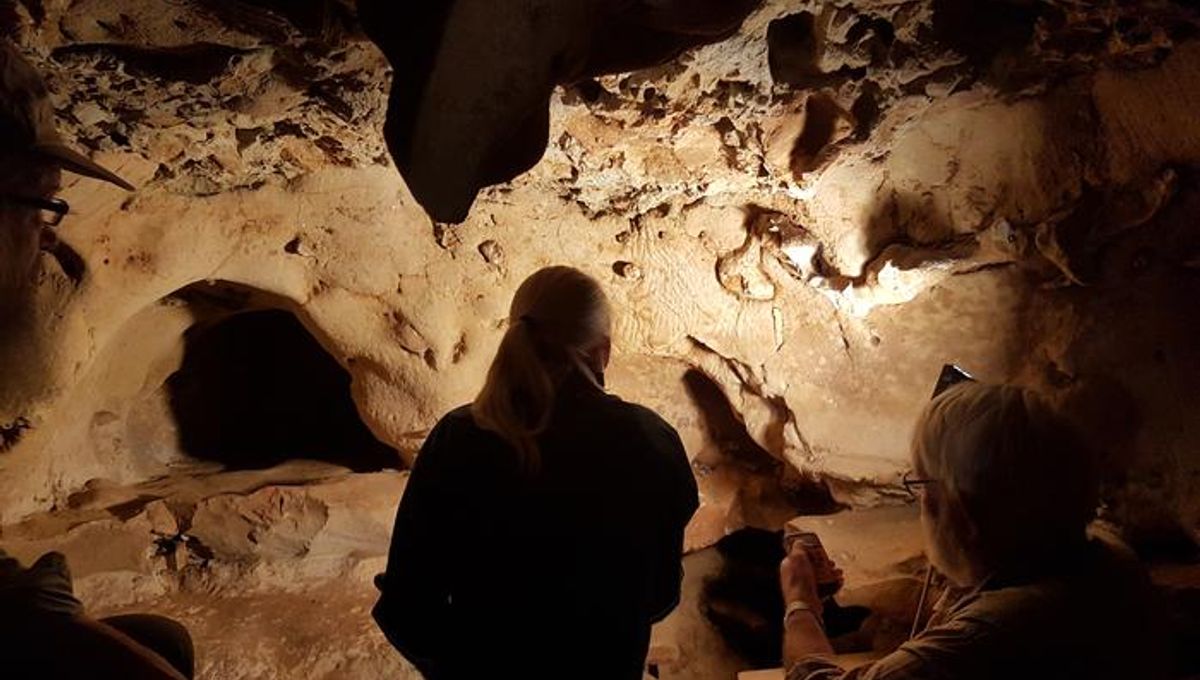
A gallery of 57,000-year-old fingerprint cave art found in France is the oldest known engravings made by humans, according to a new study. However, Homo sapiens were not the human species behind the art – it was our close cousins, Neanderthals.
The intriguing engravings were found in La Roche-Cotard of the Centre-Val de Loire in north-central France. After this cave was used as a hangout for prehistoric humans, it was sealed off for thousands of years due to icy sediments, only to be rediscovered in the 19th century and excavated in the 20th century.
On the walls of the cave, you can find a number of different “finger-flutings,” some in a circular formation and others with a wavy shaping.
Scientists at the University of Tours, France have recently used optically stimulated luminescence dating to reveal these imprints were likely made around 57,000 years. It’s clear they were not made by our species, Homo sapiens, as we had not even settled in this part of Europe yet.
The cave contains a number of stone tools, suggesting this was a well-used site for a community of prehistoric humans. The tools were fashioned in a particular style known as “Mousterian,” a technology associated with Neanderthals, which further proves the engravings were not made by Homo sapiens.
The markings consist of “finger-flutings,” essentially lines imprinted on the soft sediment of the cave wall. The researchers believe these simple markings were no mistake. After analyzing their shape and arrangement, the team concluded that they are deliberate, organized, and intentional shapes created by hands.
Comparison with other known “experimental” human markings also indicates that the fingerprints of La Roche-Cotard were made in an active expression of creativity.
Older examples of human artwork are out there, however. In Cueva de Ardales, southern Spain, there are a collection of painted cave stalagmites that are believed to date up to 65,000 years old. Once again, these were created by Neanderthals, not Homo sapiens.
In terms of the oldest figurative art – as in images that reflect the physical reality around us – that honor is currently awarded to Homo sapiens, who painted a fat-bellied pig in Indonesia at least 45,500 years ago. The previous record-holder for the world’s earliest figurative artwork was a painting of wild cattle found in a cave in Borneo, thought to date to around 40,000 years old, also created by Homo sapiens.
Our Neanderthal cousins were once portrayed as heavy-browed “cavemen” who lacked the cognitive abilities that make our species so important, but that idea is now widely dispelled.
A wealth of evidence shows that Neanderthals were incredibly smart creatures. They created brilliant artworks, they cared for the vulnerable in their community, and developed incredibly rich cultures. While it’s still not fully understood why they fell into extinction around 40,000 years ago, it almost certainly wasn’t for a lack of brain power.
The new study is published in the journal PLOS ONE.
Source Link: World's Oldest Cave Engravings Found, But Homo Sapiens Were Not The Artist